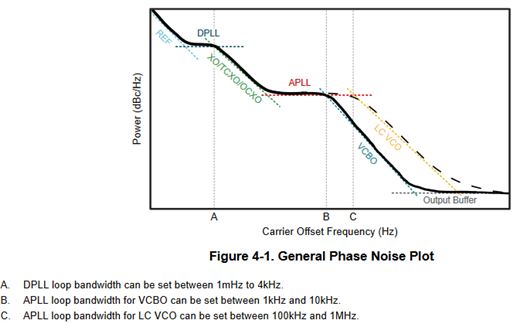Tool/software:
Hi Expert,
I would like to double check can LMK05318B do Jitter attenuation? In a certain application scenario, the customer's input and output clock signals have the same frequency and format, but the jitter margin of the input clock is insufficient. Can we expect the output to have a larger jitter margin?
Regards,
Hailiang


